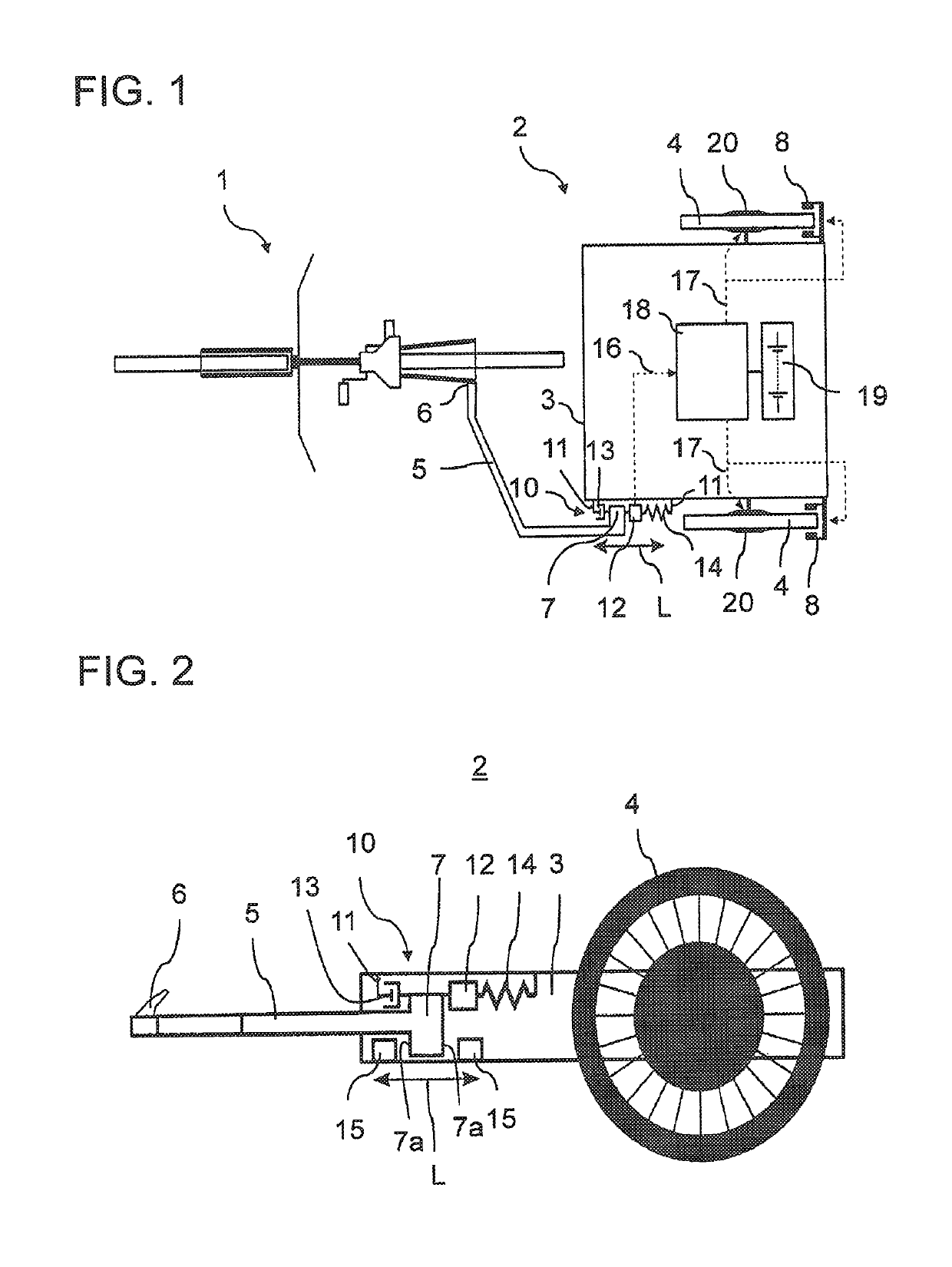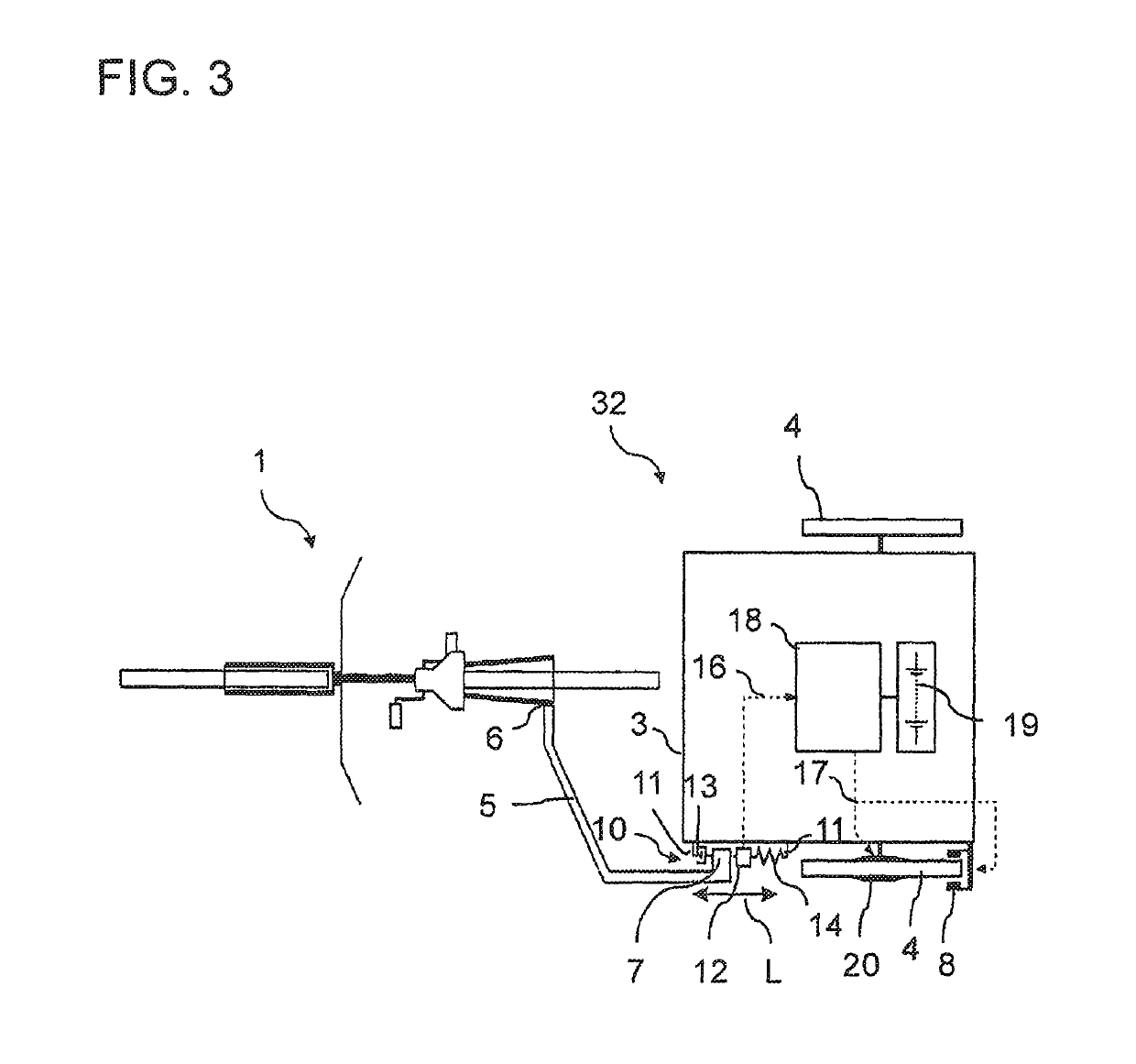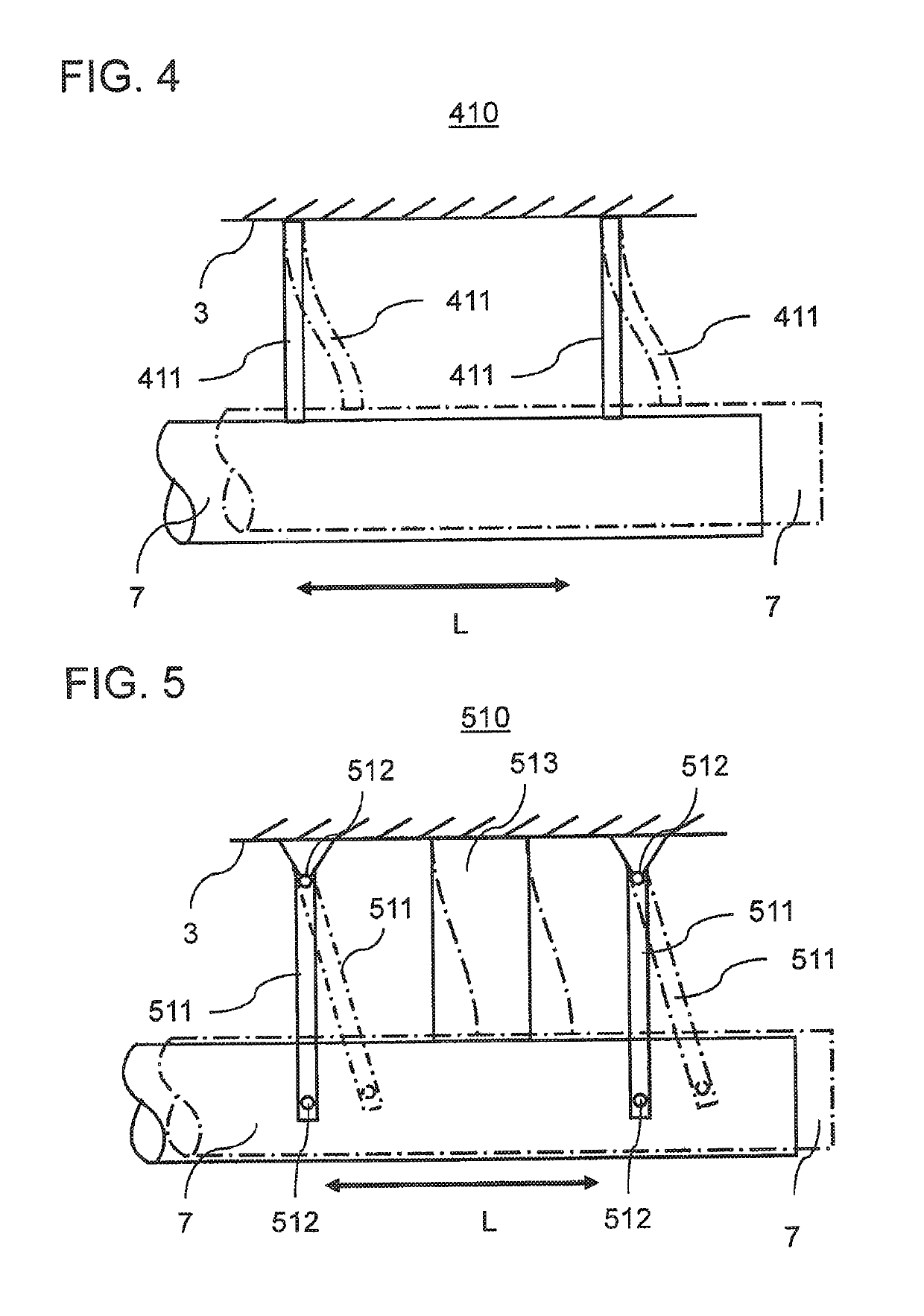Trailer for a bicycle
a technology for bicycles and trailers, applied in bicycles, bicycle equipment, transportation and packaging, etc., can solve the problems of not being able to be used in the proposed manner with conventional bicycles, affecting the speed of travel, and affecting the handling behavior of bicycles
- Summary
- Abstract
- Description
- Claims
- Application Information
AI Technical Summary
Benefits of technology
Problems solved by technology
Method used
Image
Examples
embodiment 410
[0065]FIG. 4 shows a detailed view of an embodiment 410 for structural implementation of the decoupling device 10. The decoupling device 410, once again shown in highly schematized form, is realized by means of two bending plates 411, which are made from carbon or a carbon composite. The bending plates 411 are non-rotatably fixed at one end to the trailer body 3, for example to the trailer frame, and at the opposite end to the tow bar 5, especially at the trailer end region 7 of the tow bar 5. The bending plates 411 have low stiffness in the direction of travel or longitudinal direction L and, as a result, can bend transverse to the longitudinal direction L of the trailer, thereby creating the translational degree of freedom.
[0066]The spring stiffness and desired damping are adjusted by the appropriate choice of the geometry and material of the plates 411. Thus the bending plates 411 constitute the functional components 11, 13 and 14 in FIG. 1.
[0067]The broken lines illustrate a sta...
embodiment 510
[0069]FIG. 5 shows an alternative embodiment 510 for the decoupling device 10.
[0070]According to this embodiment, the decoupling device 510 comprises two pivot arms 511, which are each rotatably attached via low-friction rotary bearings to the trailer body 3 at one end and rotatably attached to the tow bar 7 at the opposite end and extend across the longitudinal direction L of the trailer 2.
[0071]Arranged centrically between the two pivot arms 511 is a bending body 513, which is likewise fixed at one end to the trailer body 3 and at the opposite end to the tow bar 7. Thus the bending body 513 likewise extends across the longitudinal direction L of the trailer 2 and is bendable in the longitudinal direction L.
[0072]The spring stiffness and damping of the decoupling device 510 is achieved by means of the additional bending body 513, which undergoes shearing stress under the effect of an acceleration force, while in this case the pivot arms 511 swivel in parallel. This is represented i...
PUM
 Login to View More
Login to View More Abstract
Description
Claims
Application Information
 Login to View More
Login to View More - R&D
- Intellectual Property
- Life Sciences
- Materials
- Tech Scout
- Unparalleled Data Quality
- Higher Quality Content
- 60% Fewer Hallucinations
Browse by: Latest US Patents, China's latest patents, Technical Efficacy Thesaurus, Application Domain, Technology Topic, Popular Technical Reports.
© 2025 PatSnap. All rights reserved.Legal|Privacy policy|Modern Slavery Act Transparency Statement|Sitemap|About US| Contact US: help@patsnap.com



